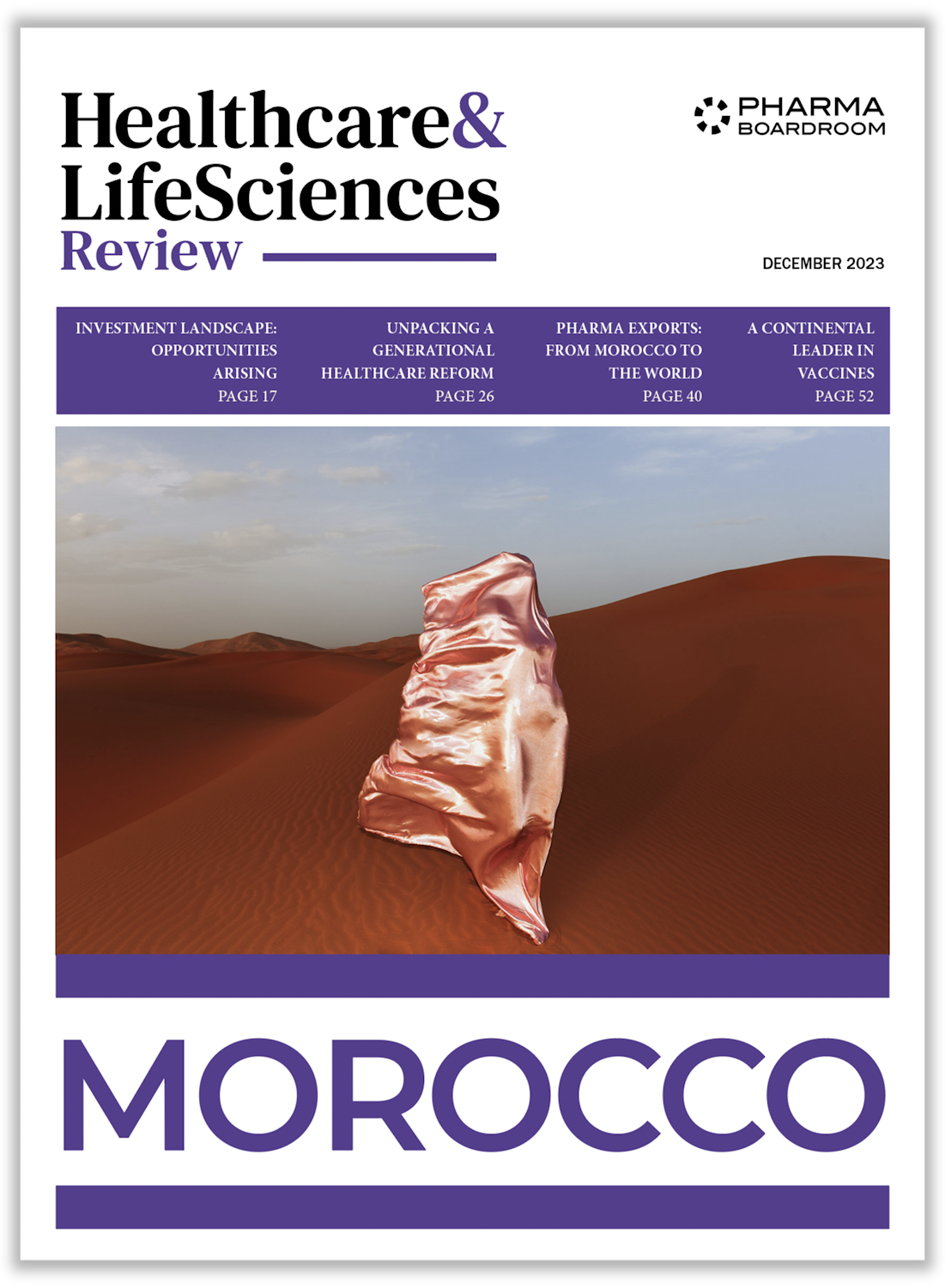The CEO of MSD Italy discusses the company’s promising pipeline, its plans to realize growth through the launch of innovative new drugs in 2016, the paths towards a sustainable healthcare system for Italy, and the vision she has for her company.
At the beginning of the New Year, how is MSD positioned to grow further in the market in 2016?
Last year, the company was focused on laying the foundation for strong growth in 2016, driven by the launch of several important innovative treatments. This year we are celebrating the 60th year of the company in Italy, and simultaneously the 125th anniversary of the group. MSD has maintained a tradition of breakthrough innovations throughout its long history, with many first-of-its-kind treatments discovered and developed by our scientists. We still hold true to this today, and the group invests seven billion dollars into R&D annually, surpassing not only our own competition, but positioning us as the fifth-highest investor in research across any industry, globally.
In 2016, this dedication to innovation will manifest itself in the launch of extremely promising treatments such as Adempas, which we will be launching here in Italy in the very near future. Another exciting prospect is the launch of our new immuno-oncology drug, Keytruda, which has received ‘breakthrough’ designation by the US FDA. This will set a new standard for oncology treatment in patients, starting with indications for melanoma and lung cancer. This drug acts through reinforcement of the immune system, and the vision it ushers in is one of a generation free from chemotherapy. That will allow people to live longer and with a far higher quality of life. Another major development addressing an area of serious concern is our antibiotic pipeline. Resistance to traditional antibiotics is an imminent threat to the health of patients worldwide, and especially in the West. For many years there has not been any successful development of new antibiotics to combat this. MSD currently has three new antibiotics set to launch in 2016 alone. With these launches we are also bringing a new philosophy to the market, championing a holistic approach to combating the growing resistance to antibiotics by promoting prevention, correct use in both humans and animal health, as well as new technologies in the form of our innovative treatments
Finally, we just launched Zepatier in US and Canada, a breakthrough for Chronic HCV, with high cure rates of 94 to 100% across broad patient GT1 and GT4 populations, including difficult-to treat groups.
With several high-profile launches underway, positioning yourself as a partner to the healthcare authorities will be an important step towards getting these products to patients as quickly as possible. How would you define your relationship with AIFA today?
We have a good relationship with AIFA. We have just completed two very important negotiations, the result of which I would define as positive, as we were able to come to an agreement which will bring our treatments to Italian patients. This is always our ultimate aim. AIFA shares this aim, and they appreciate the value our drugs bring to both patients, and to the sustainability of the healthcare system. For example, in the negotiations for our diabetes product we were able to demonstrate how it will not only improve the quality-of-life for patients, but also contribute to sustainability by delaying the need for insulin administration. AIFA recognized this, and we had constructive negotiations as a result.
The introduction of innovative drugs is an area which receives a lot of attention with regards to the sustainability of the healthcare system. With your own portfolio of innovative drugs set to expand significantly, what actions would you like to see the government take to fund their access to patients?
The next step for healthcare authorities will be to take concrete actions further demonstrating that they understand the need for a system in which indirect savings created by our treatments can be transferred towards the funding of further treatments.
Taking our immuno-oncology drug Keytruda as an example, we see three ways in which sustainability, or progress towards a sustainable healthcare model, can be achieved. The first strategy, which would give us a long-term solution, is to take the pharmaceutical budget and combine it with the budget for hospital expenditure. In this way, savings in the hospital sector realized by innovative drugs would be immediately reinvested into the funding of new drugs by virtue of a single budget governing both sectors.
An intermediate solution could be the implementation of this strategy on a smaller scale, in this case for oncology and drugs for CNS. The spending for these drugs would be separated from the public pharmaceutical budget and allocated in an ad hoc fund to be created.
Finally, a short-term solution which could be implemented immediately, is the introduction of a dedicated tax with the specific aim of funding innovative drugs. Again, for oncology you could implement a one-cent tax on every cigarette sold for example. In this way cancer-inducing products will create a fund for the promotion of new oncology treatments.
As Managing Director for one of the largest companies in Italy, you have been closely involved in the search for sustainable models by organizing workshops and roundtable events bringing together government and industry stakeholders. Where do you see significant progress being made?
Currently the government is working on finding a solution to implement. The most promising sign we have is that they are actively seeking work with us in bringing stakeholders together and thereby getting a more complete view of the situation. I think it is very important that the decision-makers who will be implementing these plans first hear the voices of all the stakeholders and indeed involve the industry in their discussions in a meaningful way.
An area which has the potential to create significant savings for the government, and with which you, as the head of SPMSD Italy, have experience, is vaccines. However, currently the level of coverage is falling to new lows in Italy. How are you encouraging their use here?
Here too, we are encouraging change by contributing to the discussions surrounding vaccination and by bringing stakeholders together. Currently all of our efforts in this area are focused around the expected approval of the new National Vaccination Plan which has been put together by the health authorities and has been signed by the Minister of Health. The new National Vaccination Plan will prove itself to be amongst the smartest solutions in improving the sustainability of the healthcare system as vaccines do represent a true investment for a Government’s economy and an insurance for people’s lives.
The most important challenge around vaccines is to recover from the situation we find ourselves in today. The WHO has been very severe with Italy, as coverage among the population is falling rapidly. Our first objective therefore needs to be to help the authorities to get coverage rates up to the required standard. Approval of the National Vaccination Plan is the best way to do this, especially considering its relatively low expense compared to the large costs which could be avoided through its effective implementation. This is the most concrete action which the government could take, and it is our job, together with the other stakeholders, to support the government in this initiative.
Another area which MSD Italy stands out is in the number of clinical trials it conducts in the country. Last week, AIFA and Farmindustria announced a plan to bring 30% of the trials conducted in Europe to Italy by 2018. Could you explain what makes Italy such an attractive place for MSD to conduct these trials?
The country’s biggest asset is undoubtedly the high standard of its key opinion leaders. They understand the importance of innovative therapies and are keen to work with us towards their development. Their understanding of the need for a holistic approach which emphasizes prevention as well as direct cures is also crucial. Our centers of excellence are also among the top in the world, which underlines the importance of investing in them.
As part of our mission to fund innovation, we are very involved as MSD in the funding of both industrial and independent research. We truly believe, and this has been very well articulated by the National Institute of Health, in the new way in which collaborations between public institutions and private organizations need to evolve, moving towards transparent and concrete collaborations, with clearly defined roles and responsibilities. As MSD we are fully aligned with this vision, as demonstrated by our investment of more than €40 million in promising young researchers conducting independent research in Italy. At the end of last year, the Prime Minister highlighted the fact that our country’s economy is once again growing. If we want this to continue, we need to invest in the country, and this is one important way in which we are seeking to fulfill that responsibility. What we would like to see in return, is clear recognition of our efforts by the government.
In 2015 MSD entered the list of Top 10 best companies to work for. With significant opportunities ahead, retaining your most talented staff in the face of a competitive industry will certainly be crucial in realizing them. How do you work to keep your most promising talent in the company?
Here too, I think that the most important step we can take, and this ties into what I would like to see at a national level for the industry, is recognition of the efforts made by individual employees, and of the talents they possess. The second step is to design career paths which are conceived with the aim of helping our talented staff to grow. This could mean lateral movement towards new opportunities, allowing for international experience, as well as vertical movement for high-potential employees. Finally, we ask our employees to actively contribute to our growth in visible ways, so that they can clearly see how their actions have an impact on the wider company. The organization must also continually change in accordance with the dynamic environment in which we operate, and this offers opportunity for growth to those with ambition. When people feel valued, and their career path is forged by taking their own desires and ideas into serious consideration, they are far more likely to stay at the company and to continue to contribute to its success. You don’t build a business. You build people, and then people build the business.
Looking towards the future, what is your ambition for the company’s position in Italy over the next few years?
My vision is to succeed in our efforts to further reinforce our collaboration with institutions, thereby saving patient’s lives and improving their quality of life. I would also like to continue to grow in our responsibility to help prevent the spread of disease, and foster the development of talented individuals. Finally, I would like the performance of the affiliate to reflect this result, but I believe that if we continue to live up to our vision of patient-centricity as our primary aim, economic performance will follow as a natural result of that. As George Merck used to say, medicine is for the people, it is not for the profits. Profits will follow.







